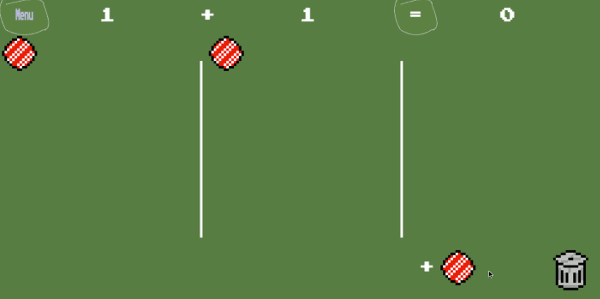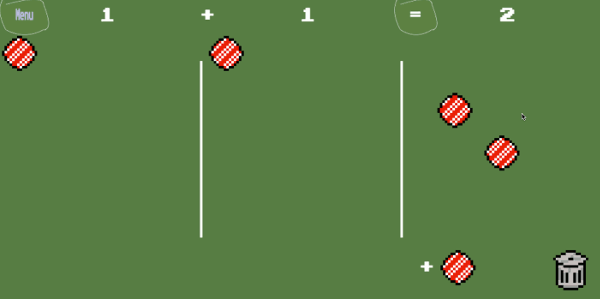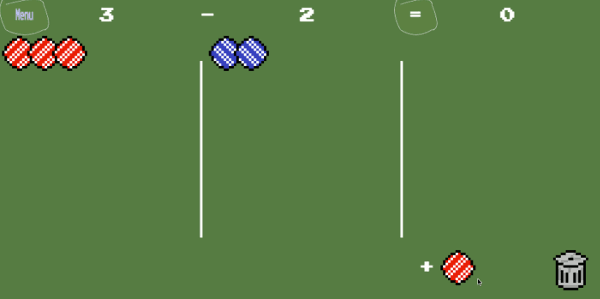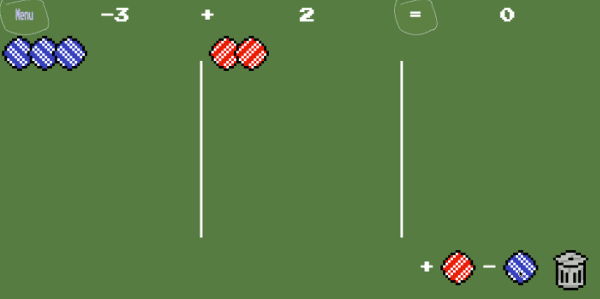Announcing Mathpx

Ever since I worked for a startup building educational kids apps in China, I've been tossing around a few ideas about writing one of my own. I may be biased as an engineer, but one of the main areas I perceive to be lacking both in the classroom and the app store is our ability to teach math. Mathpx is my new experiment to rethink the way we teach the very fundamentals of arithmetic.
Math not Memorization
When I was an undergraduate in electrical engineering at the University of Michigan, I took quite a few math-heavy courses, and I quickly discovered the obvious fact that you're a lot better off in a class when you understand the fundamentals as opposed to just regurgitating formulas.
Some of my first rigorous math classes really made me realize how much I hadn't understood of the basics in grade school. I had breezed through the Nevada public school system answering questions like "What is pi?" with "3.14" without realizing that was only the tip of the ice berg.
With Mathpx, I wanted to help kids get a solid foundation in the most basic concepts possible. Based on my own grade school experiences and my observations volunteering in classrooms, I realized that I had to take it way back.
1 + 1 = Disconnect
Enough has been said elsewhere about education systems' reliance on memorization and testing, but the way we teach math doesn't just encourage memorization, it prevents anything deeper from day one.
Why do we teach our children subtraction in the first grade but wait years to introduce the concept of negative numbers? 2 - 1 is something a toddler should be able to calculate, but change the order to -1 + 2 and that's taboo until middle school, and 2 - 1 = x has to remain hidden for even longer.
Each of these problems are fundamentally the same thing, but with our grade school they require a leap in understanding to progress. Why not just teach the fundamentals at the start?
We're not Limited to Counting on our Fingers Any More
With the fairly recent rise of tablets, we're just getting started with what teachers can do when they're not limited to counting apples on their hands and writing problems on the board. I scrapped all of this and tried to rethink what the connections to basic arithmetic really are, and this is what I came up with.
Mathpx
In Mathpx, players count out the answers to basic arithmetic problems by dragging balls around the screen. The written form of the problem sits right above and automatically updates, making the connection to pencil-and-paper math intuitive.

Pressing the equals button racks up all number balls, so it's easy to see if the two sides of the equation are equal or not.

Let's make the jump to subtraction. Subtraction works the same way, but it shows numbers being subtracted as blue balls instead of red. Now when the player presses the equals button, positives and negatives visually cancel out, and the remaining values rack up.

With this visualization of math, why hold out on negatives for the next few years? Here is the easy jump to negatives.

Mathpx is designed to evoke a visualization of math that fits nicely with everything from counting to arithmetic with positives and negatives to algebra, because really, it's all one concept.
A Challenge
Don't believe me that your kid isn't ready to learn this level of math right now? Hand them a device with Mathpx on it and see what happens. When you're teaching the fundamentals from the start, kids can learn in an afternoon play session what the school system thinks should take years.
The App
Mathpx is just a hobby experiment of mine, so you can play it for free right now in the browser at mathpx.justinmccandless.com. It's also live on the Chrome Webstore and the Firefox Marketplace, also for free.
Hopefully I'll get around to releasing this on Android and iOS too, and if so I will update this page. In the meantime, enjoy the app, and here's to better ways of teaching math.